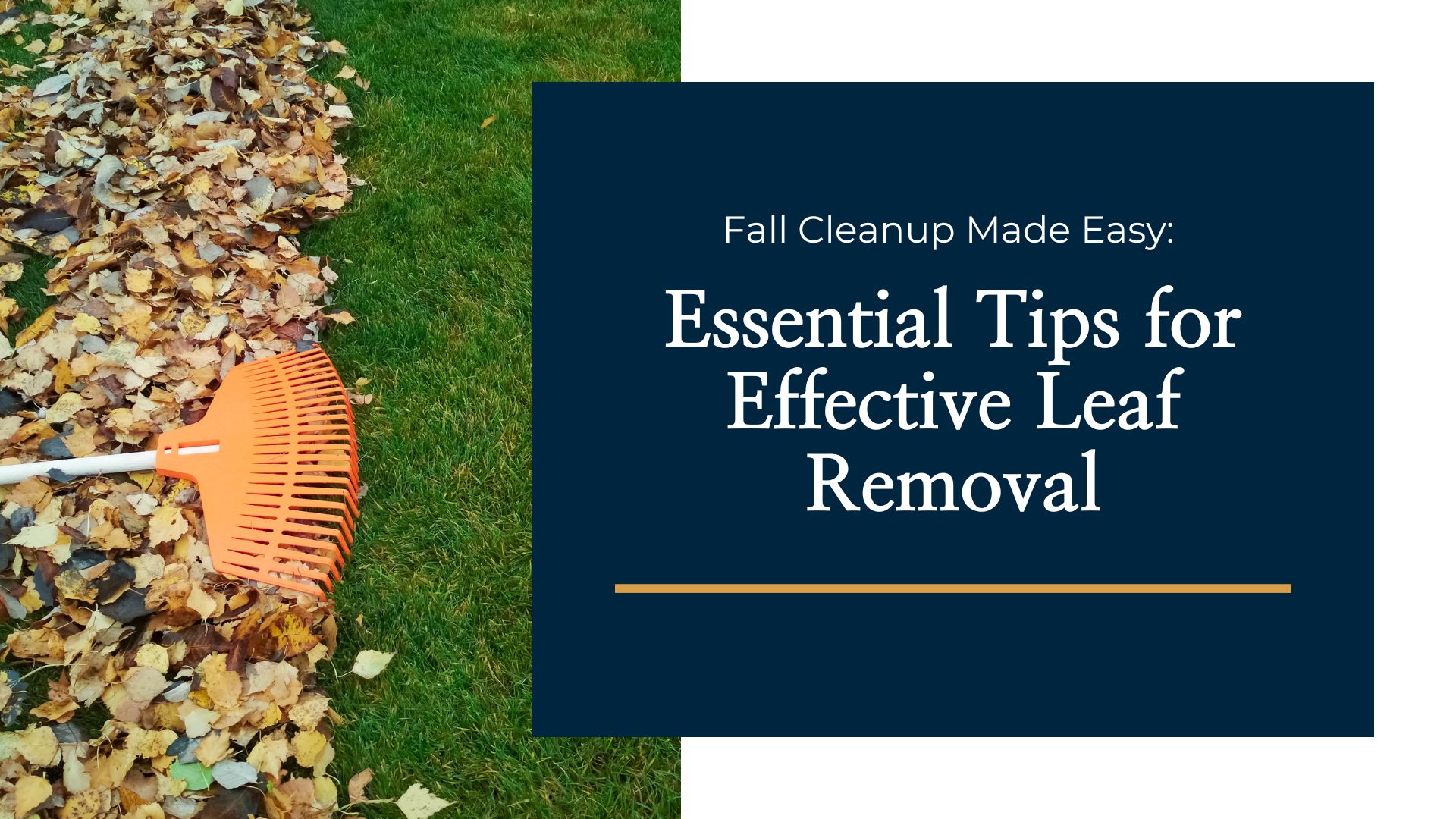
Fall Cleanup Made Easy: Essential Tips for Effective Leaf Removal
Autumn in Cincinnati is a magical time. The vibrant leaves painting our city in hues of red, orange and gold is a breathtaking sight. But as the leaves begin to fall, many homeowners’ dread starts to grow. The endless raking, the clogged gutters, the struggle to maintain your landscape, the fear of lawn damage… It’s enough to make anyone want to hibernate until spring. Fear not, leaf-loathing neighbor! This guide is your ticket to mastering leaf removal for a leaf-free lawn.
Importance of Leaf Removal in the Fall
As the vibrant hues of autumn leaves arrive in our neighborhoods, it’s easy to get caught up in the beauty of the season. One of the great parts about living in Cincinnati, Ohio, is being able to enjoy the changing seasons.
However, the falling leaves also signal the start of a crucial task: fall clean up. This annual ritual is not just about keeping your yard tidy; it’s a vital step in maintaining the health and longevity of your outdoor space.
Leaving a thick layer of leaves on your lawn can have detrimental effects. The leaves can smother the grass, preventing sunlight and air from reaching the roots. This can lead to a patchy, unhealthy lawn that is more susceptible to disease and weed growth.
Additionally, the decomposing leaves can create a breeding ground for mold, mildew and pests. That could wreak havoc on your fall plants.
Timely leaf removal also helps to prevent clogged gutters and downspouts, which can cause water damage to your home’s foundation and exterior. By staying on top of fall clean-up, you can avoid costly repairs and ensure that your property remains in pristine condition throughout the year.
A well-maintained yard not only enhances the curb appeal of your home, but also contributes to a healthier, more sustainable environment in your neighborhood.
Preparing Your Yard for Fall Clean-Up and Leaf Removal
Before tackling the leaf-removing process, it’s essential to properly prepare your yard for the task at hand. Begin by surveying your yard and identifying any potential obstacles or hazards. Remove any branches, twigs or other debris that may interfere with your raking or leaf-blowing efforts.
Next, consider the condition of your lawn. If the grass is long or overgrown, it’s best to mow it before tackling the leaves. This will not only make the raking or blowing process easier but also help to prevent the leaves from matting down and creating a thick, suffocating layer on your grass.
Make sure to have your tools and equipment readily available and in good working condition. Take a look at your rake, leaf blower and lawn mower to make sure they are working properly so you can tackle the project at hand.
Proper Bagging and Disposal of Leaves
Once you’ve gathered all the fallen leaves in your yard, the next step is to properly bag and dispose of them. It’s important to choose the right type of bag. Opt for sturdy, reusable bags or biodegradable paper bags that can be easily composted or recycled. Avoid using plastic bags, as they can take years to decompose.
As you fill the bags with leaves, make sure to pack the leaves tightly to maximize their capacity. This will not only help you manage the volume but also make the disposal process more efficient. If you have a large amount of leaves, consider using a lawn or leaf tarp to transport them into the bags.
When it comes to disposal, the most eco-friendly option is to compost the leaves. Composting is a natural process that transforms organic matter, like leaves, into nutrient-rich soil that can be used to nourish your garden or lawn. If you have a compost bin or pile, simply add the leaves to it, ensuring they are mixed with the other organic materials to create a balanced compost.
If you aren’t able to compost, check with your local municipal authorities to determine the proper leaf disposal methods in your area. Many communities offer curbside leaf collection or have designated drop-off sites where you can take your bagged leaves. Some municipalities may have specific guidelines for leaf disposal, such as scheduling pickup days or requiring the use of certain types of bags, so it’s best to check before you start the work.
Dealing With Stubborn Leaves and Debris
While the majority of leaves may be easily raked or blown away, there are often stubborn pockets of debris that can be more challenging to remove. These persistent leaves and other organic matter can accumulate in hard-to-reach areas, such as under shrubs, along fences or in the corners of your yard, making the clean-up process more tedious.
To tackle these stubborn areas, you may need to employ a combination of tools and techniques. A leaf blower can be particularly effective in dislodging leaves that have become matted or stuck to the ground. By directing the powerful airflow into these problem spots, you can loosen and lift the debris, making it easier to gather and dispose of.
For areas with dense vegetation or tight spaces, a handheld leaf rake or a small, flexible-tine rake can be invaluable. These specialized tools allow you to reach into tight corners and around obstacles, ensuring that no leaf is left behind. Additionally, a detachable leaf blower nozzle or a brush attachment can help you navigate these tricky areas and dislodge even the most stubborn debris.
If you encounter particularly stubborn leaves or debris that resist your initial efforts, consider using a garden hose or a low-pressure power washer to gently rinse them away. This method can be especially effective for clearing leaves from hard surfaces, such as patios, walkways or driveways, where they may have become embedded.
Lawn Care After Leaf Removal
Once you’ve successfully removed the fallen leaves from your yard, it’s important to take the necessary steps to maintain the health and appearance of your lawn. Proper post-leaf removal lawn care can help to ensure a lush, vibrant and weed-free outdoor space throughout the year and complement your hardy fall flowers.
Begin by closely inspecting your lawn for any areas that may have been damaged or stressed during the leaf removal process. Look for bare patches, compacted soil or signs of disease or fungal growth. If you notice any issues, address them promptly by overseeding, aerating or applying targeted treatments to restore the health of your grass.
In the aftermath of leaf removal, it’s also a good time to consider applying a fall-specific lawn fertilizer. These specialized formulas are designed to provide the essential nutrients your grass needs to strengthen its root system and prepare for the winter months. Follow the manufacturer’s instructions carefully, and be mindful of the appropriate application rate and timing for your local climate and grass type.
Leaf Removal: Your Solution to Enjoying a Clean and Well-Maintained Yard This Fall
Proper leaf removal is essential for maintaining a healthy lawn and preventing costly damage to your property. While the task may seem daunting, armed with the right knowledge and tools, you can tackle it with confidence.
However, if you’d rather spend your fall enjoying the beautiful season instead of raking and bagging, let Seasons Best Landscaping handle the leaf removal for you. Our team of experts will transform your yard and take care of the hard work of fall clean-up for you. Contact us today to schedule your fall clean-up.
